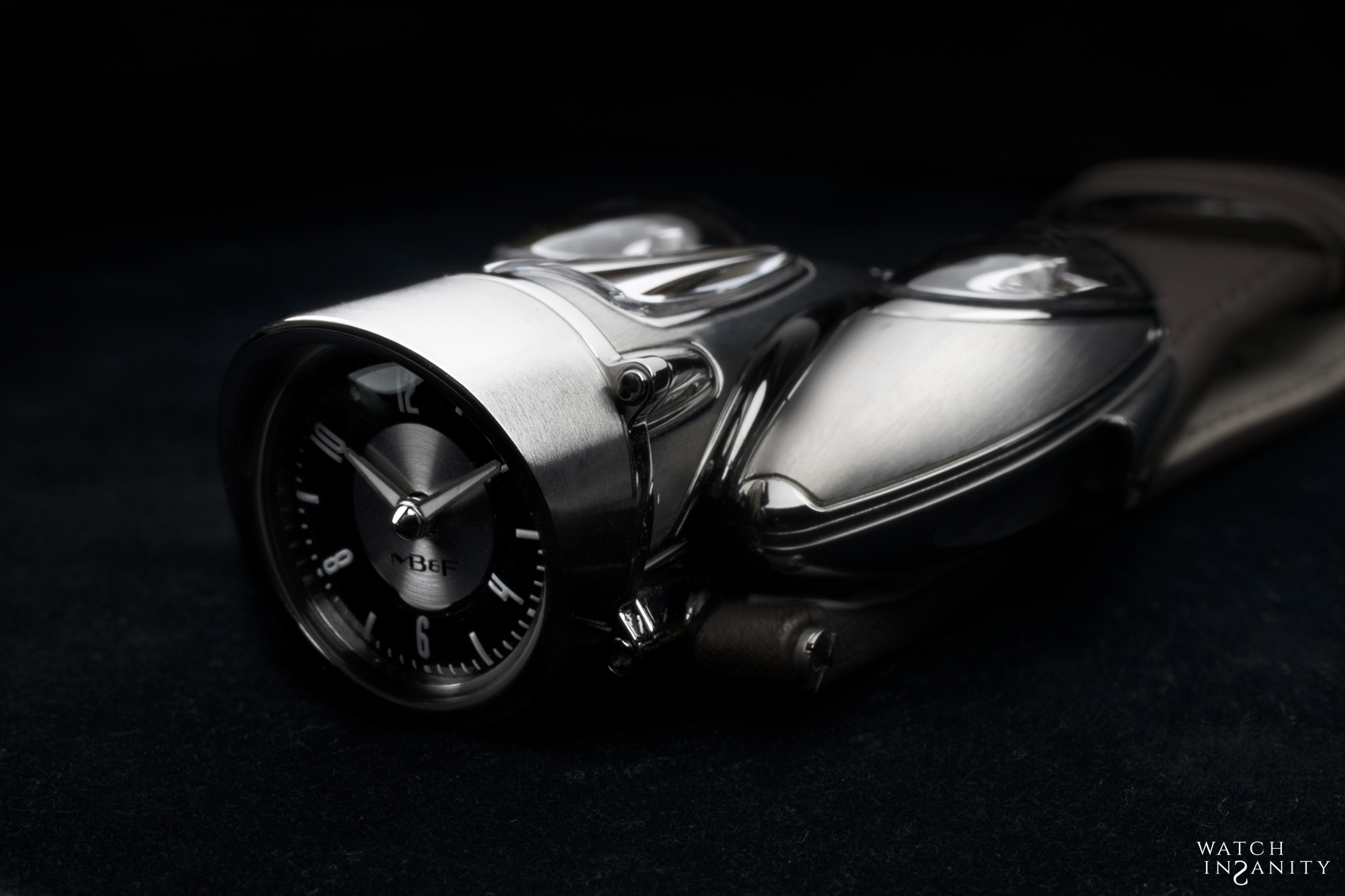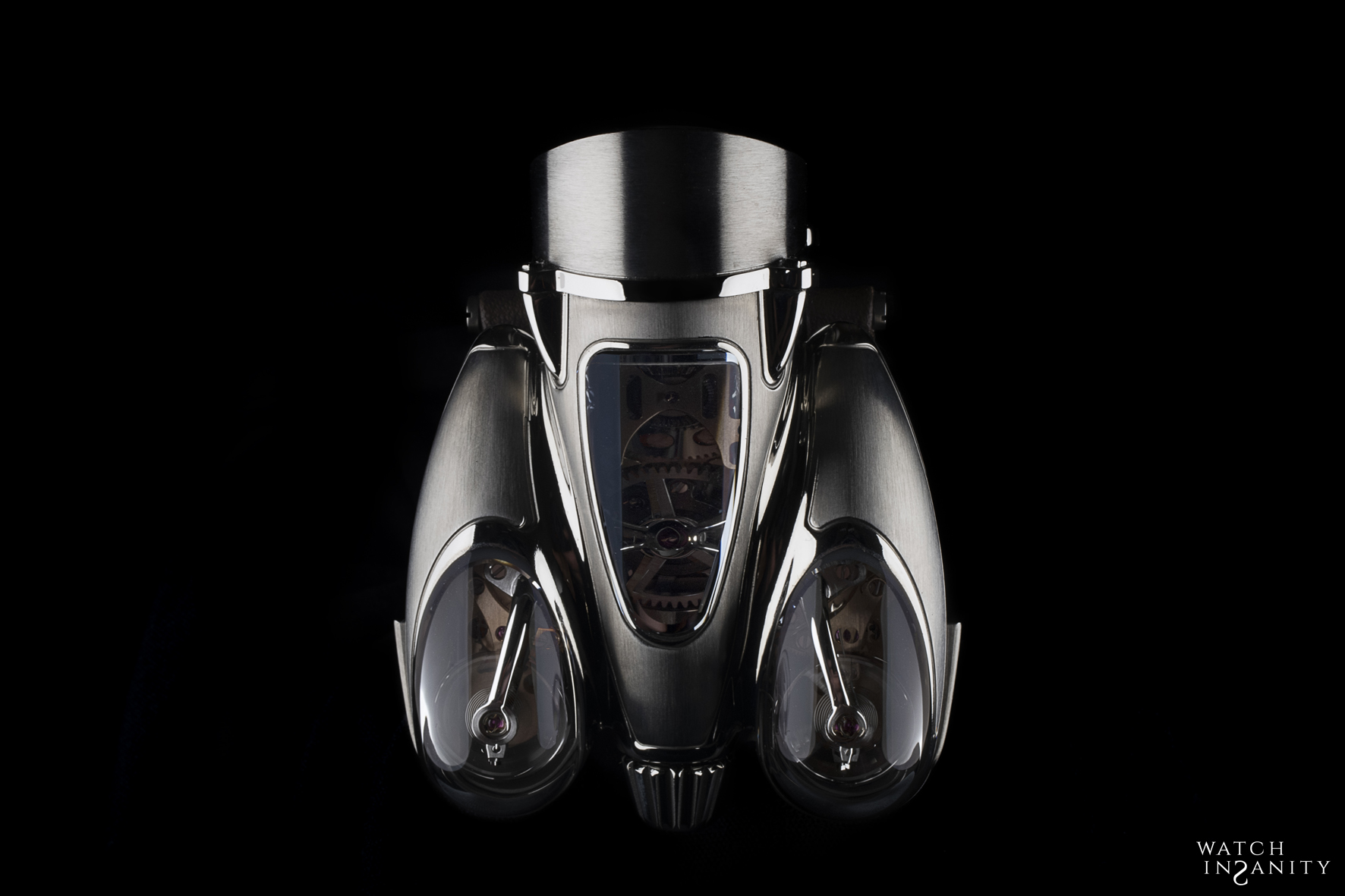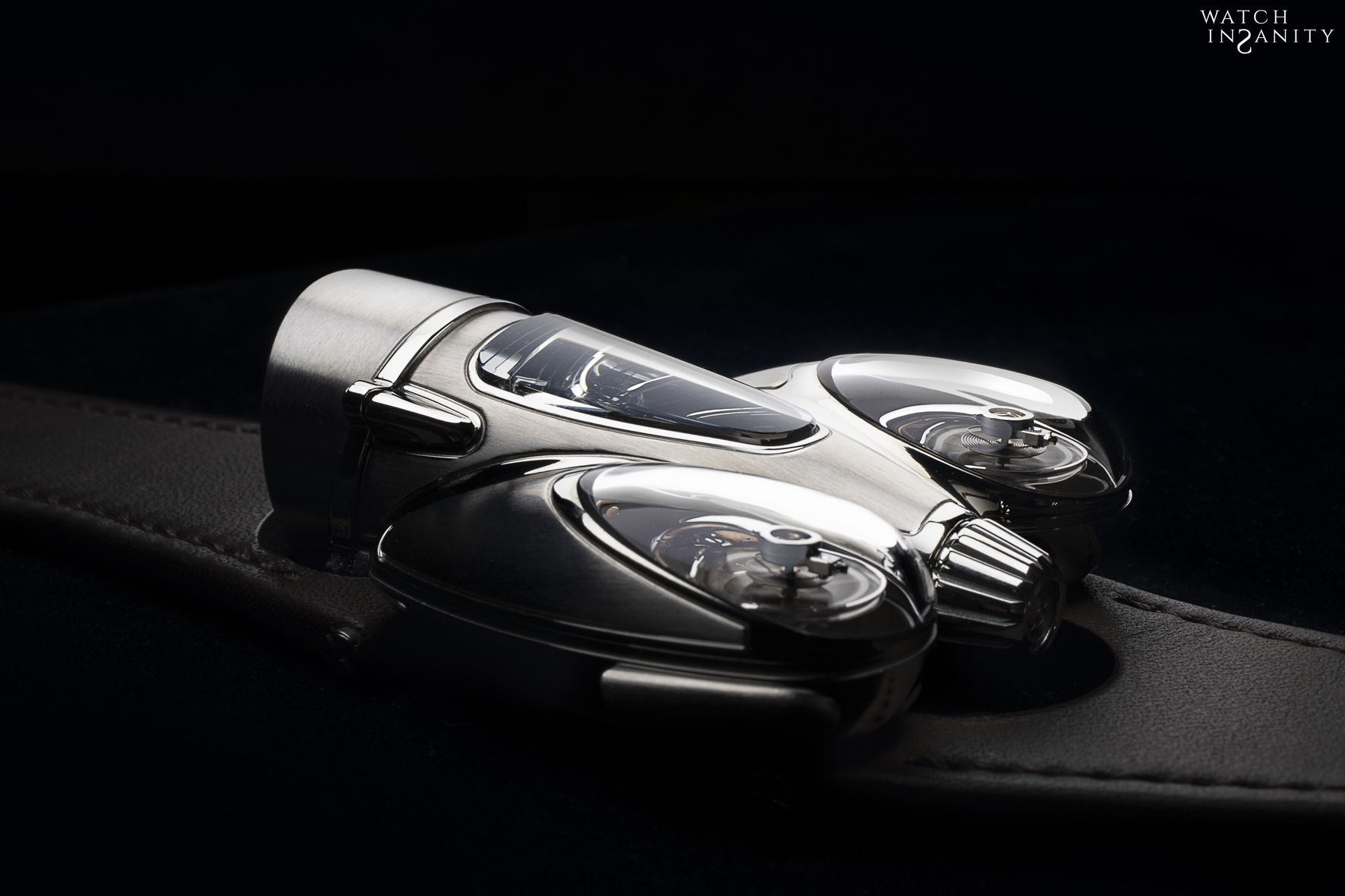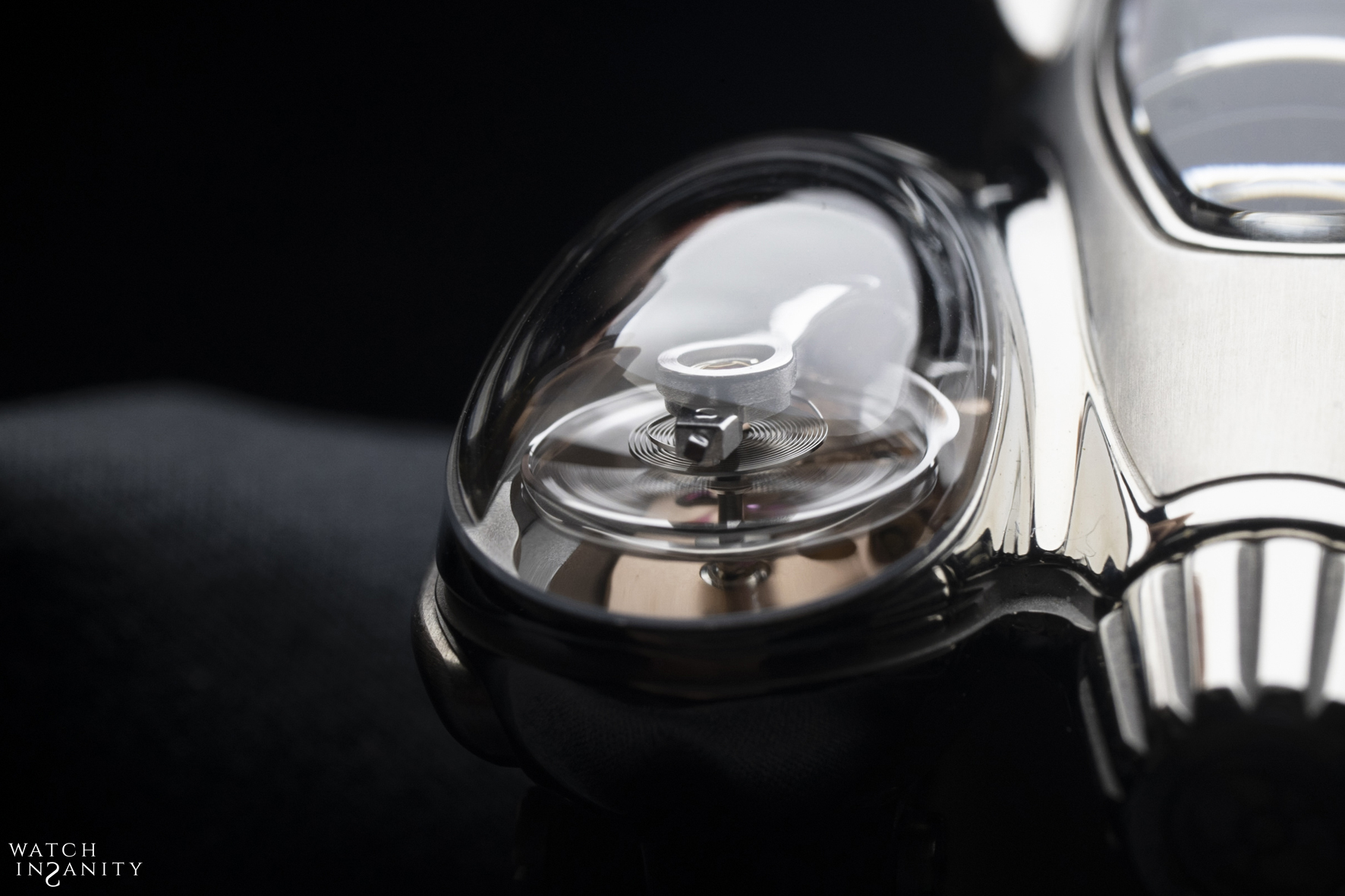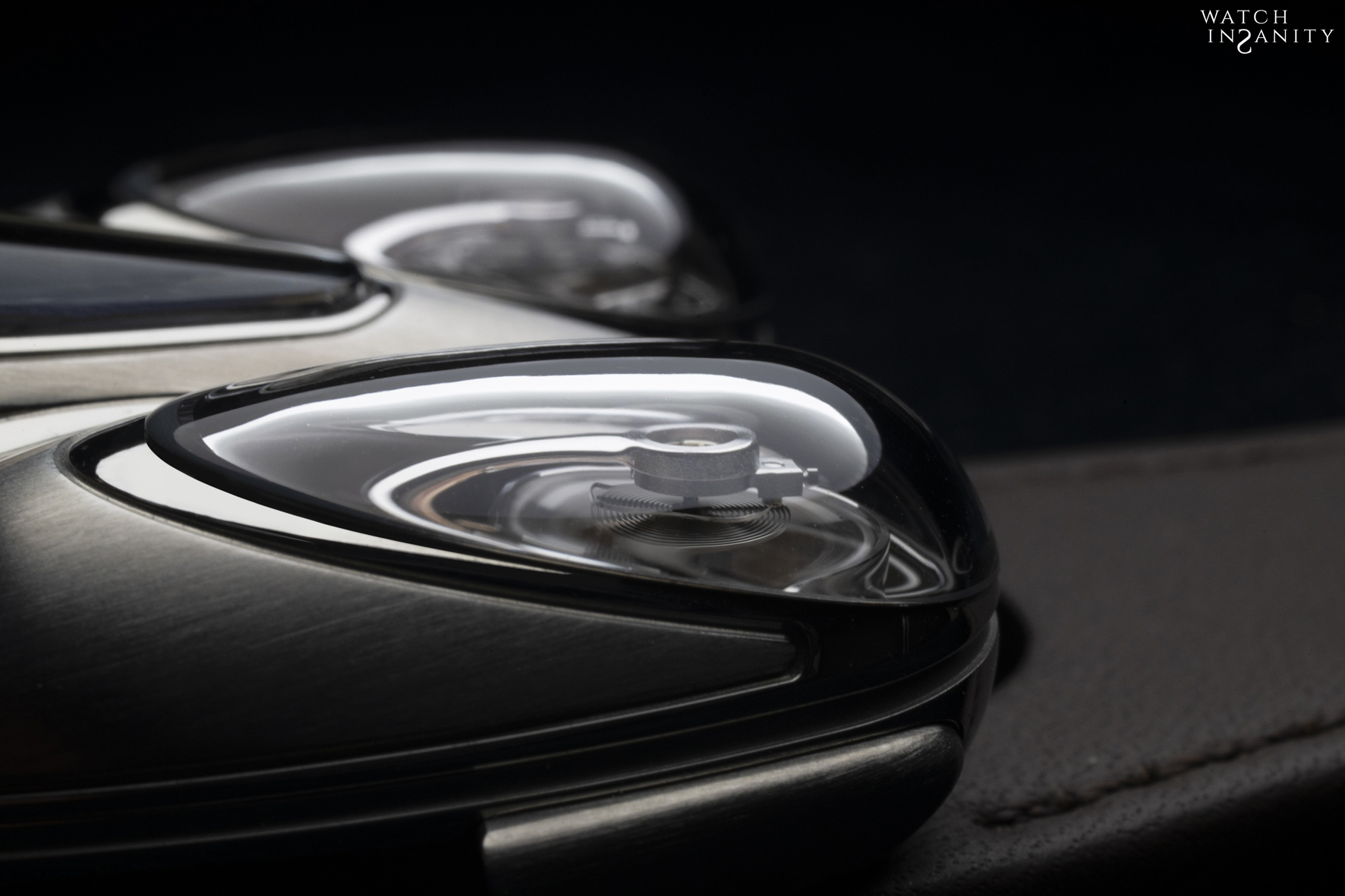MB&F: HM9 Flow “The Extremes Of Creativity”
20 February 2019Not ‘brand’ or ‘maison’, but ‘conceptual laboratory’. This is how MB&F defines itself. The acronym stands for Maximilian Büsser, the founder and creative mind, & ‘friends’, i.e the partners who make the ideas of the visionary Büsserreality.
After 15 years managing prestigious watch brands, in 2005 Maximilian Büsser resigned from his Managing Director position at Harry Winston to create MB&F, referred to precisely as ‘an artistic and micro-engineering laboratory’ dedicated to designing and crafting small series of radical concept watches by bringing together talented horological professionals that Büsser both respects and enjoys working with.
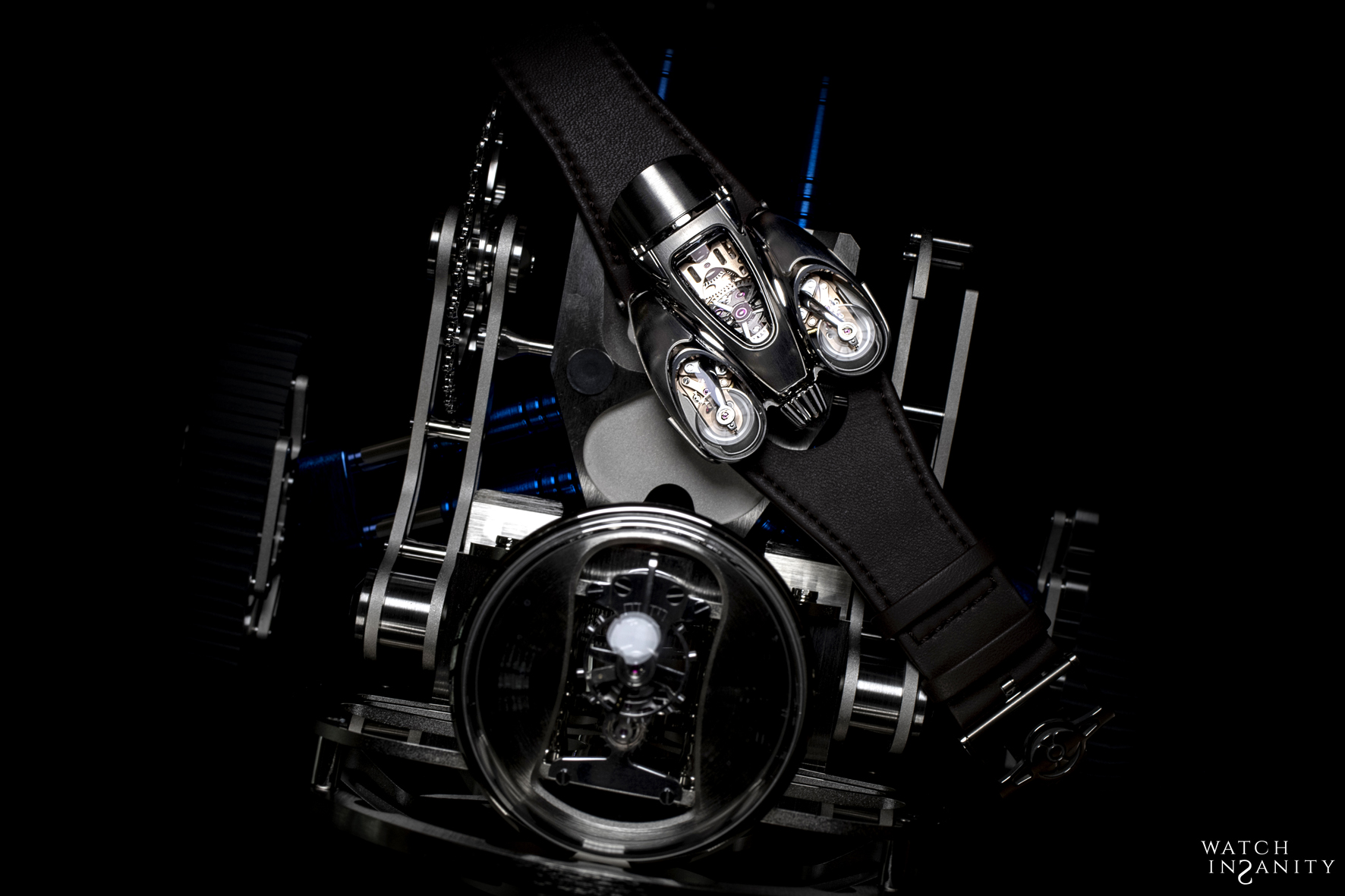
In 2015, MB&F celebrated its 10th anniversary, a decade rich in satisfaction and creativity – 11 remarkable calibers forming the base of the Horological Machines and Legacy Machines for which MB&F has become renowned.
In 2007 the first Horological Machine, HM1, was unveiled. Its sculptured, three-dimensional case and beautifully finished engine (movement) set the standard for the creations that have followed: HM2, HM3, HM4, HM5, HM6, HM7, HM8 and HMX – all Machines that tell the time, rather than Machines to tell the time.
The round-cased Legacy Machine collection saw the light of day in 2011. These more classical pieces – classical for MB&F, that is – pay tribute to nineteenth-century watchmaking excellence by reinterpreting complications from the great horological innovators to create contemporary objets d’art. LM1 and LM2 were followed by LM101, the first MB&F Machine to feature a movement developed entirely in-house. The year 2015 saw the launch of Legacy Machine Perpetual featuring a fully integrated perpetual calendar. LM SE was launched in 2017.
MB&F strategically generally alternates between launching contemporary, resolutely unconventional Horological Machines and historically inspired Legacy Machines.
As well as Horological and Legacy Machines, MB&F has created space-age MusicMachines (1, 2 and 3) in collaboration with music box specialist Reuge; and with L’Epée 1839, unusual clocks in the form of a space station (Starfleet Machine), a rocket (Destination Moon), a spider (Arachnophobia), octopus (Octopod), and Medusa recently launched at SIHH and four robot clocks (Melchior, Sherman, Balthazar and Grant) – as well as a mechanical weather station (The Fifth Element).
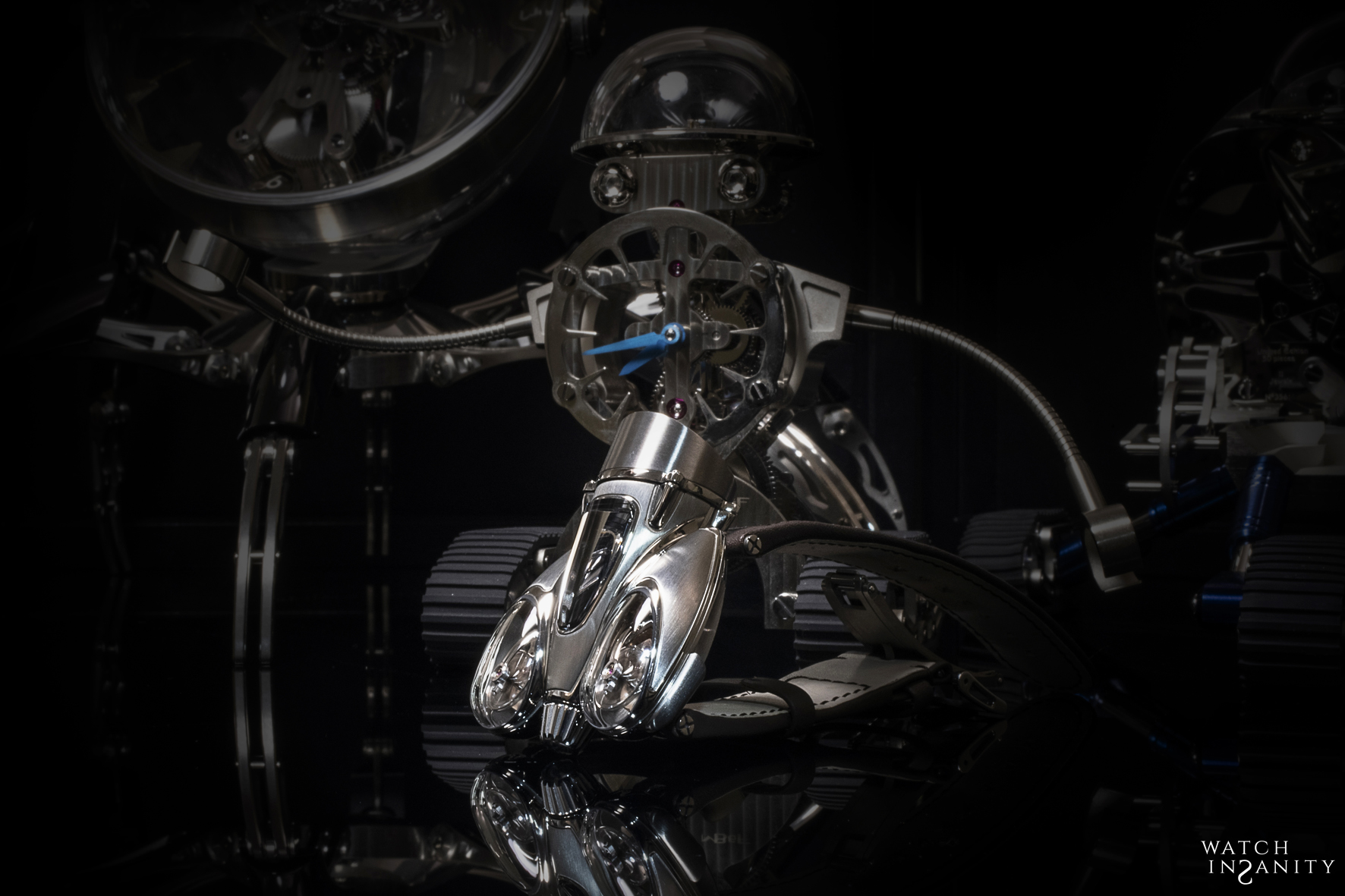
So far, the house received no less than 4 Grand Prix awards from the famous Grand Prix d’Horlogerie de Genève and, in 2015 a Red Dot: Best of the Best award – the top prize at the international Red Dot Awards – for the HM6 Space Pirate.
With this last creation Büsser, a lifetime car aficionado, first channeled the visual cues of the mid 20th century, particularly in its “Streamliner” SV editions.
Last year it went even further and launched one of its most ambitious designs yet, the Horological Machine N°9 ‘Flow’, inspired by the dynamic profiles of automotive and aviation mid-century design, already presented by Watch Insanity here.
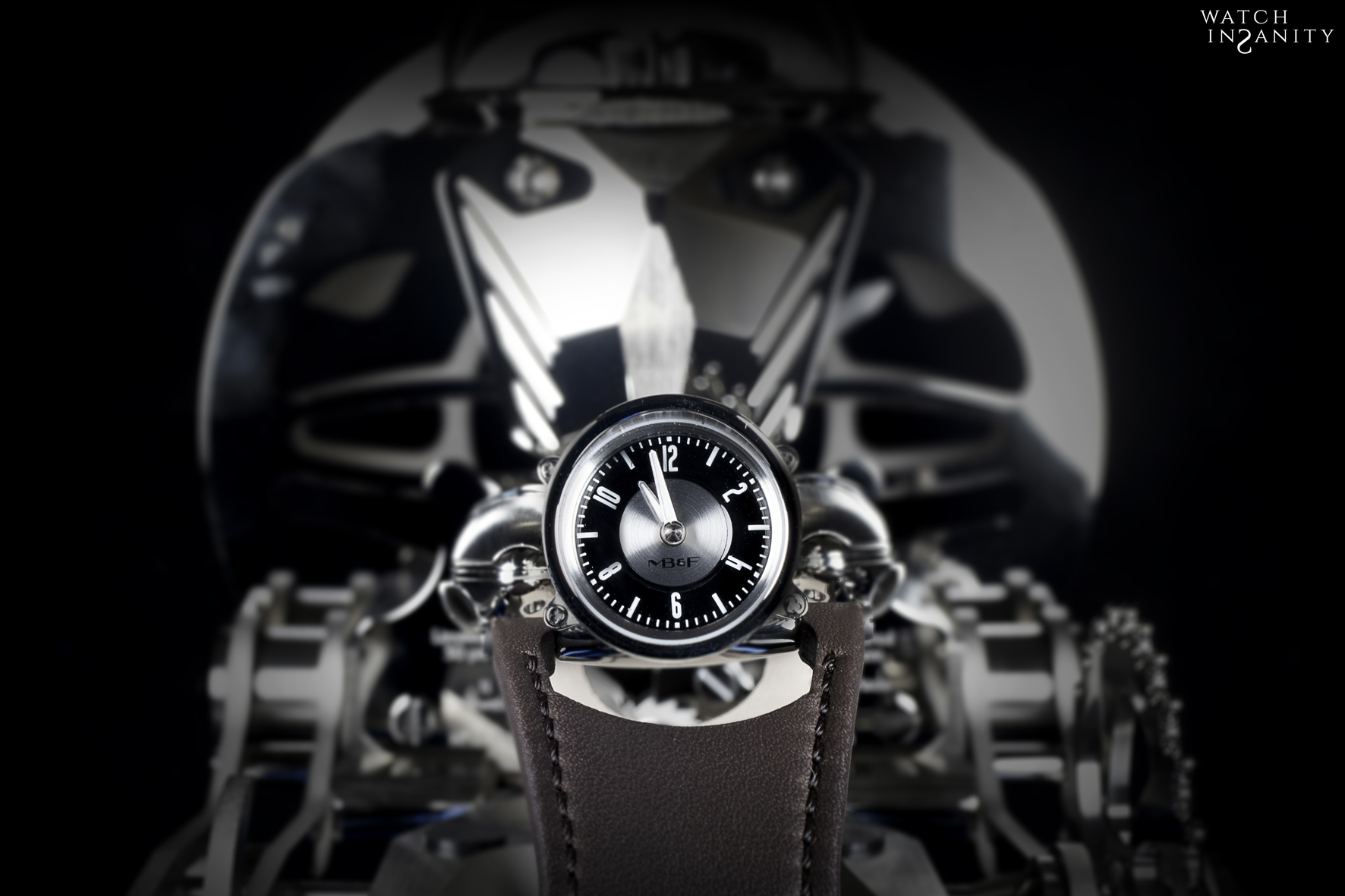
Made in titanium, the Horological Machine N°9 ‘Flow’ debuted in two limited series to 33 pieces each, the ‘Air’ edition with a dark movement and aviator-style dial and the ‘Road’ edition featuring a rose gold plated movement and a classic speedometer-style dial. Road is the one we had the chance to see and try at GMT Great Masters of Time in Milan.
Its design is audacious, not simply because of its unconventional form, but because its extreme curves and acute angles required new manufacturing standards and techniques.
When the MB&F team first brought the HM9 designs to their manufacturing partners, the response was quick and unambiguous: these designs could not be realized.
Other cases, such as the undulating shell of the HM6 Space Pirate, were geometrically complex, but their maximum height differential (the vertical distance between contiguous points) remained within 5mm. With HM9, that differential doubled. Moreover, its curves are paired with slim bands of mirror polish and wider swaths of contrasting satin finish, raising issues when finishing tools of fixed diameter (say 10mm or more) had to somehow navigate the narrow channels of the case exterior. Manufacturing conventions evolved to meet the demands of HM9.
Perhaps the most interesting aspect of HM9 is how its exuberant, expressive design is possible only because of the restraint and spatial efficiency of its engine. Because of the proportions of the curves on the HM9 case, it was essential to control the overall size. The timepiece measures 57mm at its widest point and requires a highly compact yet robust engine.
The wide-to-narrow alternating arrangement of the three primary volumes of the HM9 case made it impossible to install the movement by conventional means, within a case with limited transverse symmetry. It was necessary to divide the case along two axes and devise an unprecedented three-dimensional gasket for water resistance. This patented innovation is completely novel in its execution throughout the watchmaking industry.
The result of three years of development, the HM9 engine was created entirely in-house. Its double-balance with differential is descended from the similar system in Legacy Machine N°2, albeit in vastly different aesthetic form.
The twin balance wheels of the HM9 engine feed two sets of chronometric data to a central differential for an averaged reading. The balances are individually impulsed and spatially separated to ensure that they beat at their own independent cadences of 2.5Hz (18,000bph) each. This is important to ensure a meaningful average, just as how a statistically robust mathematical average should be derived from discrete points of information. Its purpose in including two balance wheels is to obtain discrete sets of chronometric data that can be translated by a differential to produce one stable averaged reading. This purpose would be defeated by two balances oscillating perfectly in phase, giving the same chronometric data at every point.
Lastly, HM9 further calls out the MB&F Legacy Machine collection with the curved arms anchoring its balances, their polished steel finish contrasting vividly with the movement bridges.
The Horological Machine N°9 ‘Flow’ has marked a new chapter in this history of haute horlogerie, collaboration and creativity. Let’s now wait to discover what the “laboratory” Busser will reveal in a few months at the next edition of Baselworld.
By Valeria Garavaglia

